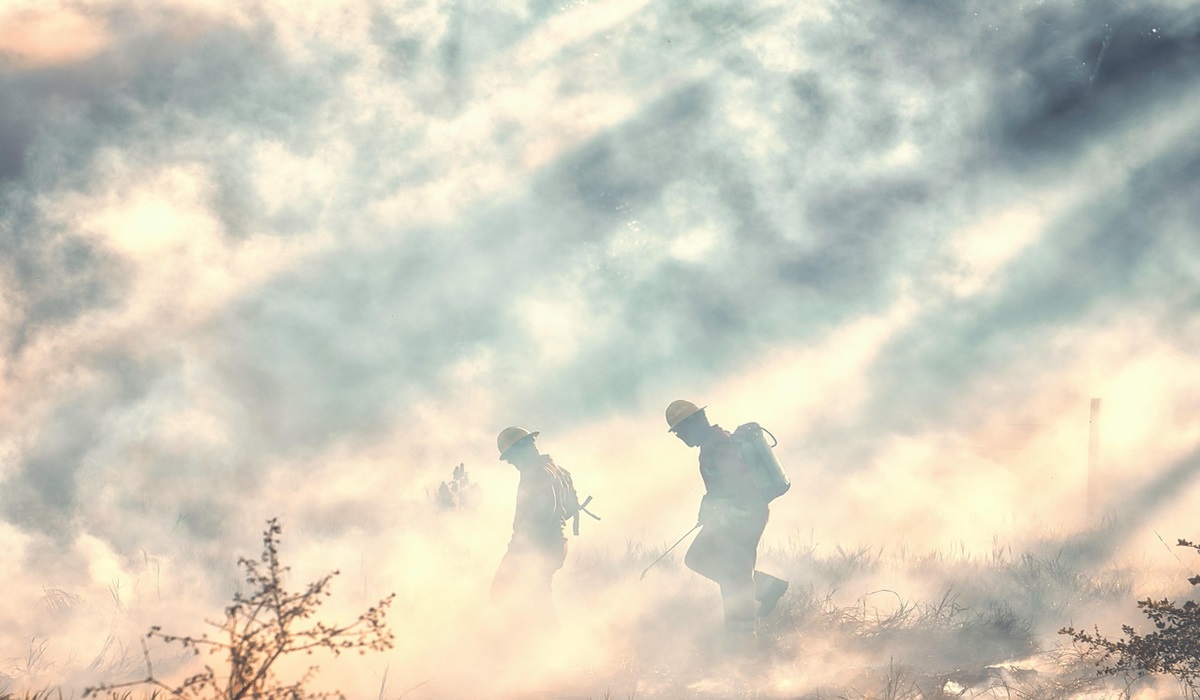Image Credit: Ronald Plett
Each summer, Canadian wildfires blanket vast regions in smoke, turning skies gray and spreading particles hundreds of kilometres from their source. While the immediate visual impact is striking, the invisible health effects can be even more concerning. Yet, the way people respond to wildfire smoke is surprisingly inconsistent: some experience coughing, burning eyes, sinus congestion, or worsening asthma, while others report little to no discomfort. What explains this stark difference in human responses?
The key lies in the composition of wildfire smoke and individual biological variability. Smoke from wildfires is a complex mixture of gases and fine particulate matter, known as PM2.5. These particles are tiny—less than 2.5 micrometres in diameter—allowing them to penetrate deep into the lungs and even enter the bloodstream. Smoke also contains chemicals like carbon monoxide, volatile organic compounds, and other irritants that can trigger inflammation in sensitive tissues.
Individuals with preexisting conditions, such as asthma, chronic obstructive pulmonary disease (COPD), or cardiovascular issues, are naturally more vulnerable. Their airways and immune systems are already primed to respond aggressively to irritants. In contrast, a healthy person’s respiratory system may efficiently filter out or neutralize these particles, reducing the perceived impact.
Genetics also play a significant role. Some people have variations in the genes that regulate inflammation, lung function, and antioxidant activity. These differences influence how strongly the body reacts to airborne toxins. For example, someone with a heightened inflammatory response may experience intense sinus irritation or worsening asthma symptoms even from distant wildfire smoke, whereas another individual with more resilient pathways may barely notice any change.
Another factor is exposure history and environmental adaptation. People who spend significant time outdoors or have lived in areas with regular air pollution may develop partial tolerance, with their bodies adapting to filter and clear irritants more efficiently. Conversely, those who are not regularly exposed may react strongly even to brief contact with smoke.
Age, smoking status, and overall health further complicate the picture. Young children, older adults, and smokers are more susceptible because their lungs and immune systems are either still developing, deteriorating, or compromised. Additionally, eye and nasal sensitivity varies between individuals; some have a more robust mucosal barrier that traps and clears particles before they reach the lungs.
Finally, the concentration and proximity of smoke cannot be overlooked. Wildfire smoke can travel hundreds of kilometres, but as it disperses, particle density decreases. Even low concentrations can trigger symptoms in sensitive individuals, while others may only react to thick, localized smoke near active fires.
Understanding these differences is crucial for public health planning. Authorities recommend that vulnerable populations—children, seniors, those with respiratory or heart conditions—monitor air quality indexes, minimize outdoor activity during smoky conditions, and use protective measures like HEPA filters or N95 masks. Meanwhile, even healthy individuals should be aware that mild irritation may indicate that the body is dealing with particulate exposure, which could have cumulative effects over time.
In essence, the uneven impact of wildfire smoke is a combination of biology, genetics, health status, environmental exposure, and the intensity of the smoke itself. While some people emerge largely unaffected, for others, wildfire smoke can provoke serious, sometimes long-term respiratory and cardiovascular consequences. Recognizing these differences can help Canadians protect themselves and their families during wildfire seasons, whether the fire is near their home or hundreds of kilometres away.









